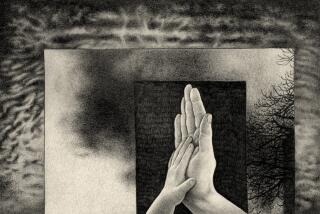Feeling SAD, Northwesterners Learn to Lighten Up
- Share via
PORTLAND, Ore. — Every year, when the Northwest rains start falling and the days grow gray and short, the blahs get so bad for some people that they find it hard to get out of bed in the morning.
JoAnn Prosser used to take antidepressants every year from November to March before a new doctor came up with another diagnosis for her fatigue, irritability and depression--seasonal affective disorder.
“I would lay in bed like a slug. I had no energy,” she said. “I got real teary, just a blue mood that hung over me all winter. And I just hated it. I hated winter, because it’s so blue.”
About one in five people in North America suffers from seasonal affective disorder--fittingly known as SAD--which is believed to stem from short winter days that delay the dawn and throw body clocks out of whack.
Though gloomy weather technically plays no part in SAD, doctors acknowledge this Northwest winter of record-setting rains has added an emotional element of gray days that has thrown sufferers a double whammy.
In Portland, for example, even the most web-footed native has gone into a funk with rains falling 103 out of the last 137 days.
“Day after day of rain, and never seeing the sun, and staying indoors too much and not getting outside to do the things people want to do, and the monotony of it. All these psychological factors were present this winter,” said Dr. Al Lewy, director of the Sleep and Mood Disorders Clinic at Oregon Health Sciences University.
“Now, they will also affect a person with winter depression, so that their winter depression would be worse because they have this added psychological burden,” he said. “You add all that up and, yes, I’d say it was the worst winter for people.”
Sherrie Baxter began suffering from winter depression after moving to Oregon from Oklahoma about 10 years ago. She cried when she heard Christmas carols, but didn’t know why.
“I remember walking around the stores at Christmastime and I would just cry. There was nothing in my life that would make me feel that way,” she said.
Depression, a craving for carbohydrates and fatigue are among SAD’s symptoms, which vary from person to person.
“It’s extremely rare that they’re suicidal or hospitalizable, or that they’re so depressed that they can’t get out of bed all day long, can’t function or go to work,” Lewy said. “But there may be a couple like that. Most people are more of a moderate type of depression.”
Most SAD sufferers respond to treatment with bright light first thing in the morning, which pushes their natural rhythms--which can drift from about 21 to 25 hours--back into phase with the 24-hour cycle.
Light boxes built especially for this purpose emit light at 10,000 lux, an intensity 50 to 100 times brighter than the lights in a typical home, but still not as bright as the noontime sun at 100,000 lux.
“Sunlight is brighter than indoor light,” Lewy said. “Even on a cloudy, rainy day, it’s brighter than indoor light. That extra brightness in the morning is what we need year-round.
“And when we don’t get the light until late in the winter, then our circadian 24-hour rhythms drift later with the later dawn, out of phase with sleep, which is held to a certain time because of our social commitments,” he said.
The physiological effects of light therapy are usually noticeable within the first few weeks.
“Within two weeks I was better,” Prosser said. “Just less blue, less mopey about life and more optimistic.”
Dr. Charmane Eastman of Rush Presbyterian St. Lukes Medical Center in Chicago said winter depression may be a normal seasonal change for some people.
Animals too exhibit physiological changes as the days grow short, she said.
“Some animals grow a winter coat or antlers or lose them, or hibernate or migrate. It’s important for animals living in northern latitudes,” Eastman said.
“We’re really, with the use of electric lights, removing ourselves from the natural signals that affect the physiology of animals that live outside,” she said. “It makes me laugh when people say we’re different from the lower animals. We’re not that different.”
But Lewy cringes a little when patients compare their symptoms with hibernation.
“It’s such a cute idea that we all thought of it,” he said. “[But] hibernating animals lose weight throughout the winter because they’re not eating. They’re burning body fat. Winter depressives are gaining weight throughout the winter.
“We think it’s a circadian-rhythm disorder, it’s not a seasonal rhythm, like hibernation.”


